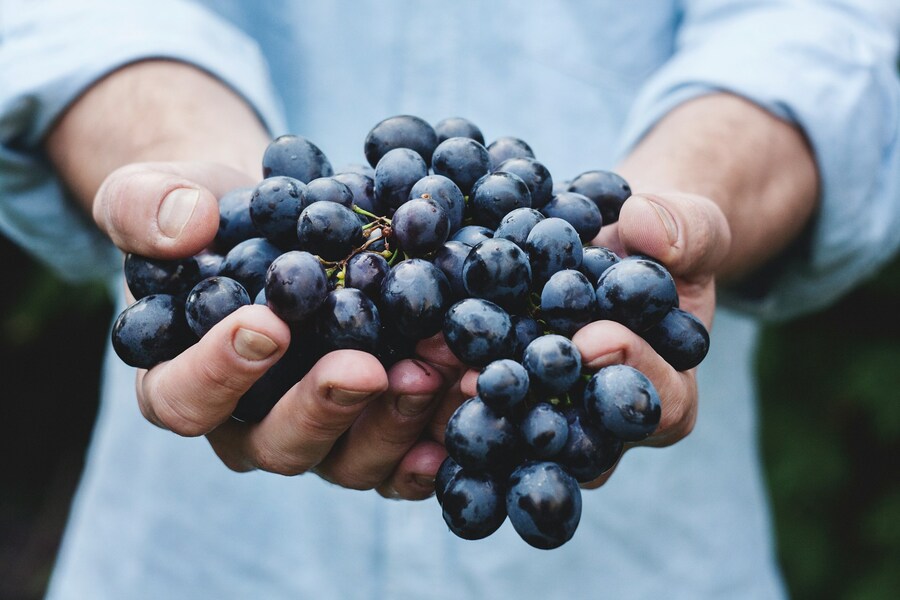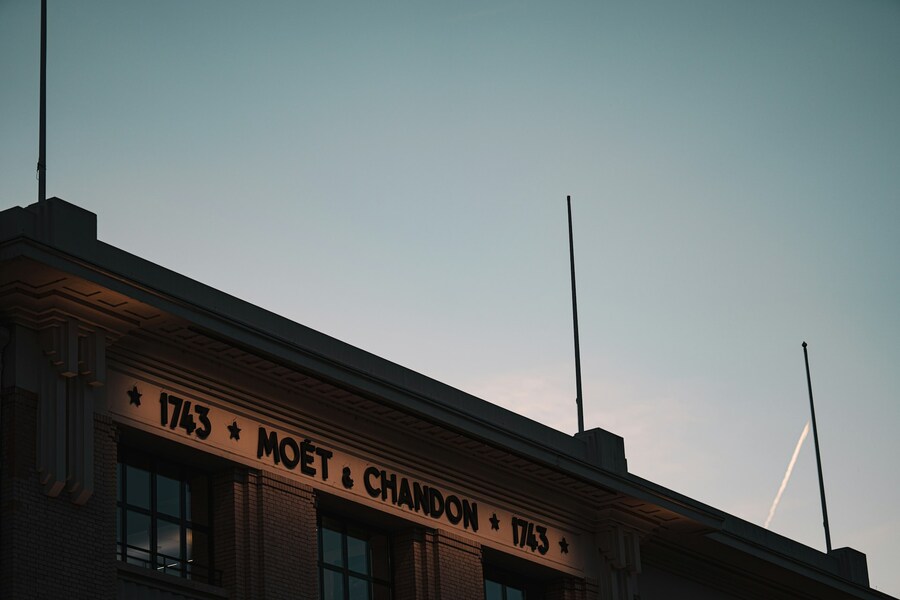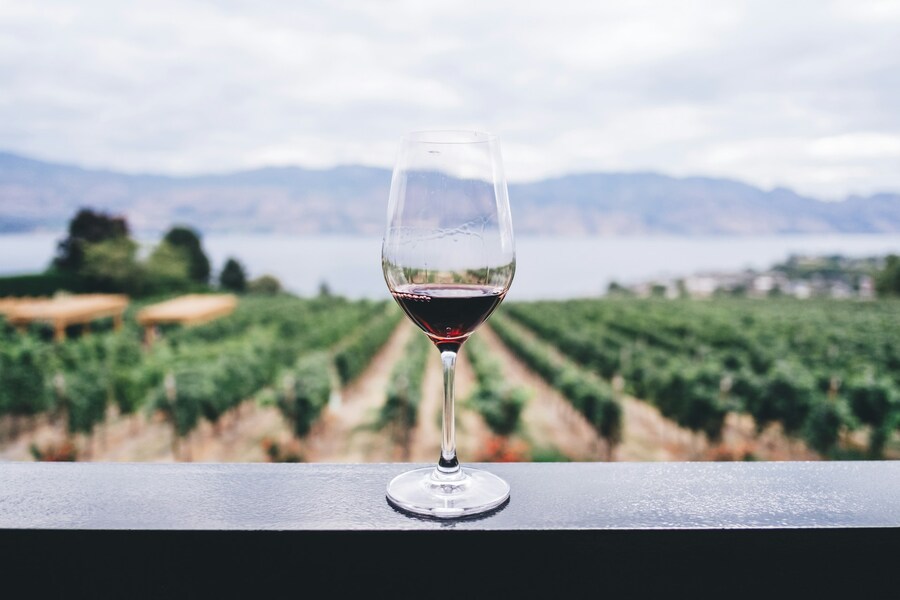The allure of wine travel extends far beyond a simple tasting; it's a journey into history, geography, and the meticulous art of winemaking. To stand amidst sun-drenched vines, to inhale the scent of fermentation in a centuries-old cellar, and to savor the final product where it was born is an experience that transforms a casual drinker into a connoisseur. This is a pilgrimage for the palate, one that transcends language barriers and continental divides. From the misty chalk cellars of France to the arid, dramatic landscapes of the Andes foothills, the world is dotted with estates that offer not just exceptional wine, but a profound cultural immersion. This travel guide is curated for the discerning traveler seeking those iconic vineyards and boutique producers that define their respective regions, providing a comprehensive itinerary for a global wine adventure that captures the essence of terroir and tradition. Now, let's toast to the journey!
Can these iconic wineries truly embody the entire world of wine?

Source: Maja Petric/Unsplash
A wine journey must be characterized by variety, showcasing the incredible spectrum of climates, grapes, and winemaking philosophies across the planet. The following destinations represent the pinnacle of wine excellence and hospitality, each offering a unique window into the world of viticulture. These are places where the history of the land is palpable, and the passion of the vintners is poured into every glass.
1. Moët & Chandon, Epernay, France
The very name Champagne evokes celebration and luxury, and no tour of this essential French region is complete without a visit to one of its defining houses. Moët & Chandon, situated in the heart of Epernay on the famed Avenue de Champagne, is an institution that embodies the grandeur of sparkling wine. The estate's history stretches back to 1743, and its association with luminaries like Napoleon Bonaparte cemented its status early on. What makes this visit truly indispensable is the descent into the cellars. A labyrinthine network, the Caves Moët & Chandon tunnel system extends for kilometres beneath the city, hewn from the chalk bedrock that's crucial to the region's climate control and aging process. This underground cathedral stores millions of bottles, each undergoing the meticulous méthode champenoise.
The experience is profoundly educational, illuminating the rigorous standards required to produce the world's most famous sparkling wine. Visitors learn about the assemblage – the blending of different vintages and grape varieties (Chardonnay, Pinot Noir, and Pinot Meunier) – and the secondary fermentation that creates the signature bubbles. The architecture above ground is equally impressive, but it's the quiet, cool solitude of the chalk cellars that truly resonates, offering a tangible connection to the history of Champagne production. Tastings often include the iconic Imperial and Rosé Impérial, providing a direct comparison of the house style. Epernay itself is a charming base, offering a more intimate feel than nearby Reims, making the journey to this corner of France a perfect blend of historic exploration and sensory delight. The enduring commitment to quality and scale at Moët & Chandon makes it a benchmark for all subsequent winery experiences on this global circuit.
2. Viña Mar, Casablanca Valley, Chile
Shifting from the European tradition to the New World's vibrant innovation, our next stop is the Casablanca Valley in Chile. Located just an hour's drive west of Santiago and close to the Pacific coast, this region is a relatively young appellation, having only truly blossomed since the 1980s. However, its immediate success has been phenomenal, primarily due to its unique microclimate. The proximity to the ocean subjects the vineyards to morning fog and cool sea breezes, resulting in one of Chile's best cool-climate growing areas. This is the domain of crisp Sauvignon Blanc and elegant Pinot Noir, a stark contrast to the robust reds produced further south. Viña Mar is a particularly stunning representation of the valley's potential. The winery is distinguished by its magnificent, Spanish colonial-style architecture, featuring white walls, red tile roofs, and sprawling patios that overlook manicured vineyards.
Viña Mar specializes in sparkling wines, using the same traditional method as their French counterparts, making it an intriguing counterpoint to the Champagne experience. Their still wines, especially the coastal-influenced whites, showcase intense minerality and vibrant acidity. The tasting room experience here is often complemented by the breathtaking views of the quebradas (ravines) that define the topography. Traveling to this region requires careful consideration of logistics, especially when flying internationally. Before heading out, securing reliable transportation from the airport is key. Services like ParkingNearAirports.io offer a range of solutions, including cheap airport car parking options and park and shuttle services, which ensure a smooth transition from the plane to the rental car counter or a pre-arranged transfer. Reviewing various airport parking rates beforehand is a smart way to manage the initial travel budget, making the rest of the trip to places like Viña Mar completely stress-free. The entire Casablanca Valley embodies the dynamism of New World winemaking, where innovation and ideal climatic conditions converge to produce world-class wines in a setting of undeniable beauty.
3. Jack Rabbit Vineyard, Bellarine Peninsula, Australia
The Australian wine scene is vast and varied, but for an experience combining gourmet dining with breathtaking coastal views, the Bellarine Peninsula in Victoria is unmatched. Tucked away on the Port Phillip Bay, Jack Rabbit Vineyard is a destination winery that perfectly encapsulates the region's laid-back sophistication. Unlike the sprawling, industrial operations of some larger Australian estates, Jack Rabbit is renowned for its intimacy and the sheer drama of its location. Perched high on a hill, it offers panoramic vistas across the bay towards Geelong and the distant Melbourne skyline – a view that elevates every sip.
The cool maritime climate here is moderated by the bay, producing excellent cool-climate varieties, most notably Chardonnay, Pinot Noir, and Shiraz. The winemaking philosophy at Jack Rabbit focuses on expressing the terroir, resulting in wines that are elegant and structured rather than overtly powerful. What draws countless visitors, however, is the holistic experience. The property boasts a fine-dining restaurant and a more casual House of Jack Rabbit Café, both utilizing seasonal local produce to create pairings that are an event in themselves. Imagine enjoying a meticulously prepared dish of local seafood with a glass of estate Chardonnay as the sun sets over the water; it's a moment of pure Australian luxury. The Bellarine Peninsula offers a refreshing alternative to the busier Yarra Valley, providing a relaxed, accessible atmosphere for a wine tour. The journey is short and scenic from Melbourne, making it an ideal inclusion for travelers seeking a world-class culinary and viticultural experience without venturing deep into the outback. This vineyard is a testament to the quality and diversity of smaller, high-end Australian producers.

Source: Claudio Schwarz/Unsplash
4. Boschendal Wine Farm, Franschhoek, South Africa
South Africa's Western Cape is one of the most visually stunning wine regions in the world, with dramatic mountains framing fertile valleys. Franschhoek, meaning "French Corner," is the historic heart of the industry, founded by Huguenot settlers in the 17th century. Boschendal Wine Farm, established in 1685, is one of the oldest and most historically significant estates in the area, offering a profound sense of place that few other wineries can rival. It's more than just a place to taste wine; it's a meticulously preserved heritage site. The estate is a prime example of Cape Dutch architecture, with whitewashed walls, ornate gables, and thatched roofs, all set against a backdrop of majestic mountains.
Boschendal's winemaking tradition is long and distinguished, focusing on diverse varietals including Shiraz, Cabernet Sauvignon, and Chardonnay, alongside its famous Cap Classique sparkling wines. The property, however, has transformed itself into an immersive lifestyle destination. Visitors can explore the historic manor house, wander through the vast rose gardens, or enjoy farm-to-table dining at one of its numerous restaurants, which celebrate the bounty of the estate's own produce. They offer various activities, from garden tours to mountain biking trails, making it an excellent stop for travelers seeking more than just a tasting room. The sheer scale and historical depth of Boschendal make it a crucial stop on a global wine tour, providing a unique blend of African history, stunning natural beauty, and internationally recognized wine quality. The estate serves as a living museum, demonstrating the enduring legacy of winemaking in this corner of the continent and the sophisticated hospitality that defines the Franschhoek Valley.
5. Garbara, Treviso, Veneto, Italy
In Italy, the discussion often turns to the classic regions of Tuscany and Piedmont, yet for a truly distinct and compelling experience, the Veneto region – home to Prosecco, Valpolicella, and Soave – offers a magnificent alternative. Our focus here is on the Garbara winery in Treviso, a perfect example of the passionate, family-run estates that define Italian viticulture. Located near the rugged terrain north of Venice, Garbara sits within the historical production zone of Prosecco, specifically the superior Conegliano Valdobbiadene Prosecco DOCG area. What makes this particular producer special is their commitment to quality over quantity and their adherence to traditional, difficult hillside viticulture.
The vineyards are often incredibly steep, requiring heroic, manual labor – a testament to the dedication of the Garbara family. The terrain is characterized by the ancient, morainic hills formed by glaciers and interspersed with volcanic soils, lending a unique mineral complexity to their sparkling wines. A visit to Garbara provides a more intimate and personal experience than the industrial scale of some larger producers. Guests are typically hosted by a family member, who guides them through the small, focused cellar and explains the nuances of the Glera grape and the Charmat method used for Prosecco. The tasting offers a superb contrast to the méthode champenoise of France and the New World, focusing on freshness, aromatic intensity, and a beautiful, persistent effervescence. Beyond the wine, the setting is quintessentially Italian, with rolling hills dotted with cypress trees and small villages. It's an exploration of the authentic, regional heart of Italian wine, a reminder that the best experiences often lie just off the well-trodden tourist path.
6. Bodegas Marqués de Riscal, Elciego, Alava, Rioja, Spain
Our final destination takes us to the historic heart of Spain's most famous wine region, Rioja Alavesa, and to one of the most visually arresting wineries in the world: Bodegas Marqués de Riscal. Founded in 1858, Riscal is a pioneer of modern Rioja, being one of the first estates to bottle its wines and to embrace Bordeaux techniques. While the traditional cellars hold centuries of history, the estate's modern fame rests on its breathtaking extension, the City of Wine, which was designed by the renowned architect Frank Gehry. This striking structure, inaugurated in 2006, is a titanium masterpiece of undulating ribbons in pink, gold, and silver – the colors representing the Riscal wine, the mesh over its bottles, and its cork capsule, respectively.
The Gehry-designed hotel and restaurant complex is a destination in itself, drawing architecture and design enthusiasts as much as oenophiles. The contrast between the ancient stone cellars, where historic vintages rest in silence, and the futuristic, soaring curves of the Gehry creation is a powerful metaphor for Rioja's respect for tradition alongside its embrace of innovation. A tour here seamlessly blends the past and the future. Visitors can trace the origins of Rioja's Tempranillo-based blends and then ascend to the hotel's terrace for a view over the surrounding vineyards and the dramatic titanium roofline. The experience highlights how wine has become a multidisciplinary art form, encompassing agriculture, history, gastronomy, and cutting-edge design. Marques de Riscal is an essential stop not only for the quality of its celebrated Reservas and Gran Reservas but also because it's one of the few places in the world where the physical structure of the winery is as globally recognized and inspiring as the wine it produces. It represents the ultimate fusion of travel, culture, and viticulture.

Source: Kym Ellis/Unsplash
Conclusion
This global circuit of 6 magnificent wineries serves as more than just a tasting menu; it's an exploration of geography, human endeavor, and cultural expression. Each stop – from the historic gravity of Moët & Chandon's chalky depths and the coastal elegance of Viña Mar, to the culinary luxury of Jack Rabbit, the ancient African legacy of Boschendal, the volcanic intensity of Garbara in Italy, and the architectural audacity of Marqués de Riscal – offers a distinct chapter in the story of wine. The dedication required to travel to these disparate locations, navigating different continents and time zones, is rewarded with a perspective that cannot be gained from reading alone. The taste of a wine, when savored at its source, is indelibly linked to the landscape, the climate, and the people who brought it to life. To undertake this journey is to appreciate that wine is truly a global language, one spoken eloquently by the land and understood instinctively by the palate. This is a journey that elevates travel into an art form and a deep, continuous education. We wish you a magnificent and memorable trip!






